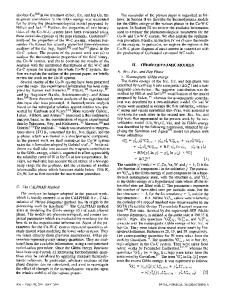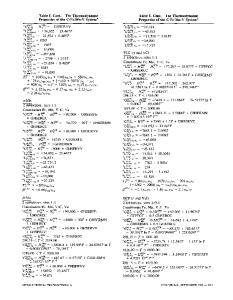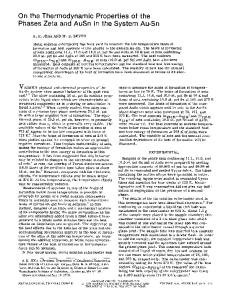Thermodynamic properties of the BaO-MnO flux system
- PDF / 423,821 Bytes
- 5 Pages / 603.28 x 783.28 pts Page_size
- 70 Downloads / 352 Views
I.
INTRODUCTION
B A R I U M oxide is more basic than CaO, so that improvement in dephosphorization is expected by its addition to CaO-bearing slags. Thermodynamic studies of various fluxes, such as the BaO-BaCI2, ttJ BaO-BaFz, 12,31 and BaO-MnO ~4l systems, have been carried out for this purpose, probably because of an increased interest in these fluxes for alloy refining. The BaO-BaF2, CaO-SiO2-CaF2-Na20, tSj and BaOBaCI2-CrzO3 I61 systems are candidates for successful dephosphorization of stainless steel. Fujita et al. 14J have shown that dephosphorization of high manganese steel and high carbon ferromanganese is feasible by using BaCO3. According to them, the desirable conditions for dephosphorization by BaCO3 are as follows: (1) lower temperature, (2) slightly lower carbon content of the metal than its solubility, and (3) prevention of contamination of the flux by SiO2, etc., in order to keep BaO content as high as possible. By taking such caution, (mass pct P)/[mass pct P] of 15 to 20 was obtained for dephosphorization of high-carbon ferromanganese by BaCO3 at about 1573 K. However, there is very little thermodynamic data on the BaO-MnO system for use in process analysis. For this reason, the present study was undertaken in order to understand thermodynamic behavior of this flux in an atmosphere with relatively high oxygen pressure at 1573 and 1673 K, using a chemical equilibration technique. The carbonate capacity was also determined for the same fluxes. Moreover, the solubility of MnO in BaO-BaF2 melts was measured to understand the effect of BaF2 on the thermodynamic properties of the BaO-MnO flux system.
II.
EXPERIMENTAL
A. Principles of the Measurement A flux containing manganese oxide was brought into equilibrium with molten silver in a nickel crucible. The SANG C H U L SHIM, G r a d u a t e Student, F U M I T A K A TSUKIHASHI, Associate Professor, and NOBUO SANO, Professor, are with the Department of Metallurgy, The University of Tokyo, Bunkyo-ku, Tokyo, 113, Japan. Manuscript submitted July 29, 1992. METALLURGICAL TRANSACTIONS B
oxygen partial pressure of the system was controlled by using a CO-CO2 mixture which may be calculated according to Eq. [1]: 1 CO (g) + 2 02 (g) = CO2 (g) AG~ = - 2 8 1 , 0 0 0 + 85.2T
J / m o l t7~
[1] [2]
The equilibrium is represented by Eq. [3]: MnO (s) + CO (g) = Mn (1) + CO2 (g) AG~ = 120,000 + 0.96T
J/mol tT~
[3] [41
Thus, with the knowledge of the activity of manganese in silver, the activity of MnO in the flux relative to stoichiometric MnO is calculated as PC02" ~/Mn" XMn aMnO = K3"
Pco
[5]
where aM,o = the activity of MnO in the flux; aM, = the activity of manganese in silver; YMn = the activity coefficient of manganese in silver; Pco, Pco2 = partial pressure of CO and CO2, respectively; K 3 = equilibrium constant for Eq. [3]; and X~a, = mole fraction of manganese in silver. Since the activity coefficient of manganese in silver was not known, it was measured using an MnO solid pellet based on the same principle as Eq. [5], in which aM~ is unity. The ma
Data Loading...











